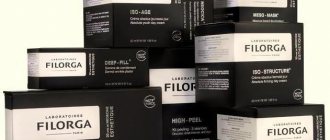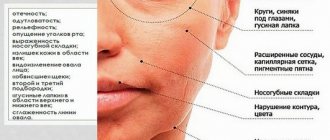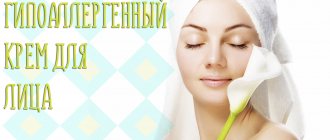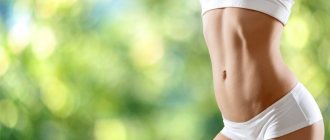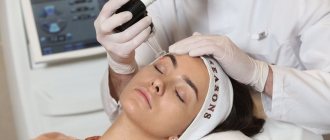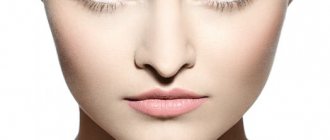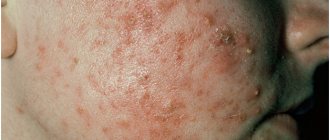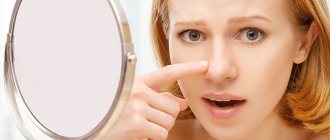Pimples are common acne, or acne vulgaris, a common skin disease that, according to various sources, affects 35 to 90 percent of adolescents. The disease can go away on its own, however, this usually does not happen soon, and for some people, acne persists into adulthood. Acne is difficult to put up with, it is often a psychological problem, and many people want treatment. But even those who immediately see a good doctor who understands modern approaches to treatment can find it difficult to cope with acne. The fact is that the drugs need to be used for a long time (otherwise it is impossible to understand whether there is any benefit from them), you have to visit the doctor again to select the appropriate therapy, and the effect usually consists of a significant reduction in the manifestations, but not the complete disappearance of acne, in addition, there is a risk of developing adverse events.
Clinic
Acne rashes are represented by comedones, blackheads and cystic formations. Comedones look like blackheads. This is nothing more than an accumulation of sebum, dead epithelial cells and dust in the ducts of the sebaceous glands that open on the surface of the skin. Most often, comedones are located on the nose, forehead and chin.
Blackheads are nodules that rise above the skin surface. Inside such a formation contains a purulent core. When inflamed, acne becomes reddish in color.
In turn, cysts are cavities containing pus.
Dangerous ingredients in cosmetics for problem skin
Cosmetics with natural ingredients are considered the best, but there are not many such products on store shelves. Products with synthetic ingredients can also be used in makeup and care for problem skin, if they do not contain the following harmful substances:
- Aluminum. This element is often found in foundation, less often it is added to mattifying creams. Scientists have proven that with frequent contact with the skin, it tends to accumulate in the body. With a high concentration of aluminum in tissues, cancerous tumors can develop.
- Silicone. It is found in both budget and expensive products. Silicone is capable of creating an impenetrable film on the skin. Because of this, oxygen starvation is formed, favorable conditions are created for the proliferation of bacteria, which contributes to the development of inflammation and aggravation of acne.
- Propylene glycol. This substance is a strong allergen. Due to its water-absorbing properties, it deprives the skin of moisture and contributes to the appearance of microcracks on it. If the product contains both propylene glycol and silicone, this makes it easier for bacteria to enter the body and promotes increased colonization and the formation of inflammatory elements.
- Talc. It also absorbs water and lipids, reducing the protective properties of the epidermis. It can cause the skin to sag and make it dry.
- Synthetic glycerin. Vegetable glycerin is good for the skin, but synthetic glycerin has almost the same effect as propylene glycol.
Development mechanism
The development of acne is promoted by a huge number of factors, which can be divided into several groups.
Physiological factors:
- The proliferation of acne-causing bacteria is Propionibacterium acnes. The contents of the sebaceous glands with keratinized epithelium serve as a suitable environment for this.
- Hormonal disorders. This is why acne often appears during hormonal changes in the body (adolescence, premenstrual period, pregnancy, abortion). Increased levels of the male sex hormone, testosterone, also contribute to the appearance of acne. Therefore, acne often develops with hyperandrogenism.
- Diseases of the digestive system. More than half of the cases of acne are associated with the presence of chronic diseases of the stomach and intestines, especially with a violation of the intestinal biocenosis.
- Increased production of sebaceous glands. Increased production of sebum leads to its thickening and weakening of its bactericidal properties. As a result, blockage of the excretory ducts occurs.
- Hyperkeratosis is increased keratinization of skin cells. Dead cells further clog the ducts of the sebaceous glands.
- Disturbances of the microbial flora of the skin.
- Hereditary predisposition.
- Immune disorders.
- Chronic foci of infection.
Lifestyle factors:
- A state of prolonged stress.
- Nutrition. The appearance of acne is promoted by a diet with a predominance of carbohydrate foods, seasonings and spices.
- Long-term use of cosmetics that clog the pores of the sebaceous glands: powder, foundation, blush and fatty creams.
- Violation of personal hygiene rules - insufficient cleansing of the skin and squeezing out blackheads.
Other factors:
- Prolonged contact with toxic and polluting substances.
- Taking certain medications (for example, glucocorticoid hormones).
- Humid and hot climate.
How to care for problem skin with acne?
In the beauty arsenal of girls there are many products that can be used to moisturize.
Moisturizing cream for problem skin
Moisturizers perform two important functions at once. On the one hand, they saturate the skin with moisture due to the presence of hygroscopic components in them. On the other hand, they have moisture-locking properties, that is, they form a film on the face that prevents moisture from evaporating.
The moisturizer may contain collagen, hyaluronic acid, panthenol, ceramides, and plant extracts. The presence of oils in the formula, for example, jojoba, shea butter, and avocado, “locks” moisture, preventing it from evaporating.
Gel for moisturizing acne skin
For problem skin with acne, it is better to choose cosmetics that do not contain fat. The texture of the care product should be light and refreshing. And here the gel comes to the rescue.
Unlike cream, gel will not be able to “seal” moisture, but the depth of its penetration into the skin is usually greater. The gel does not create a sticky or greasy film, does not leave marks on clothes, and is quickly absorbed.
Moisturizing facial masks
They contain more active substances than gel or cream. They should be used no more than 2 times a week. In addition to moisturizing components, the mask may contain ingredients that help fight acne. This product helps remove blackheads, reduce oily skin, mattify, and even out the complexion.
Moisturizing serum
The richest, most active and complex moisturizer is serum. Compared to creams, masks and gels, the concentration of active substances in it is the highest, so serums are often sold in ampoules, and only a few drops need to be applied.
Serums are mistaken for drugs, but they are not. They are used for care, but in treatment special preparations must be used, for example, Clindovit® gel, which is a topical antibiotic.6
This type of cosmetic product has a deep effect, restores the skin from the inside, activating the body's natural resources. The texture of serums is often liquid, less often gel-like. The main component in them, as a rule, is hyaluronic acid.
In home care procedures, it is necessary to use several products at once, for example, a cream is applied after the serum. Do not forget that moisturizing is only one of the stages of care; it should be preceded by cleansing, exfoliation (no more than once a week), and after it a product that provides nutrition can be applied.
Treatment: general points
The abundance of factors contributing to the occurrence of acne directly affects the nature of effective treatment for this disease. To solve the problem in this case, an integrated approach is required, including the use of a number of acne products from the pharmacy range.
To begin with, here are some general recommendations that can be briefly mentioned in a conversation with a buyer. They can not only help him fight the disease, but also increase his loyalty to the pharmacy.
The first is advice to treat concomitant diseases and sanitize infectious foci. To do this, it is necessary to undergo an examination by an endocrinologist, gynecologist, dermatologist, gastroenterologist, therapist, dentist or otolaryngologist - depending on the patient’s medical history.
The second is a recommendation to follow a diet. The appearance of acne and comedones is promoted by foods rich in carbohydrates. You should limit easily digestible sugars (cakes, cakes, sweets, chocolate), spicy foods and marinades. Food should contain enough vegetables and fruits. As a supplement to the diet, specialized foods containing fiber (for example, bran) can be recommended.
The third is an offer to undergo physiotherapeutic procedures. In particular, the UFO course has a good effect. Ultraviolet irradiation has a drying and bactericidal effect. Additionally, cryotherapy, darsonvalization and laser therapy are used.
What else do you need to know
There is no single best acne treatment. If the drug does not help within two to three months, it is replaced with another one. A long period of time is needed to evaluate the effectiveness, since eels need at least eight weeks to mature, it is unlikely that significant improvement will occur sooner.
Many people experience skin irritation—redness and peeling—when they first start using topical acne treatments. This is not an allergy; this reaction usually goes away over time. In such a situation, until the skin gets used to it, you can apply the drug with a lower concentration or less often, not even every day, and as you get used to it, start using it more often and in a higher concentration. In addition, you can additionally use a moisturizer, but it must be non-comedogenic.
During pregnancy, many drugs are contraindicated. Women who are pregnant or planning to become pregnant should stop acne treatment before becoming pregnant. If treatment during pregnancy is necessary, topical erythromycin, clindamycin, or azelaic acid may be prescribed after assessing the risks versus benefits of therapy.
Patients who improve with treatment are usually advised to continue treatment with topical retinoids (sometimes along with benzoyl peroxide).
Treatment: collecting a set
Moving directly to the selection of products for acne and pimples from the pharmacy assortment, we will highlight several groups among them that can be combined with each other. Such complexes will increase the amount of the check, but will most likely be more effective than individual drugs.
Antibacterial agents. Drugs in this group can have a systemic effect (prescribed by a doctor - for example, doxycycline, clindamycin and erythromycin) and a local effect (in the form of gels and creams that contain clindamycin or erythromycin with zinc acetate).
Hygienic skin care. The arsenal of cleansers for acne on the face (tonics, scrubs, lotions, facial washes) will differ depending on skin type. You can also use herbal decoctions (chamomile, string, sage, coltsfoot, oak bark, celandine) as skin care products. It makes sense to use them for wiping the face and washing.
Vitamin and mineral complexes. These should include retinol, riboflavin, as well as ascorbic and folic acids.
Sorbents. These drugs remove toxins from the body, normalize intestinal function and support its microflora. Examples of such acne remedies are available in every pharmacy: activated carbon, dioctahedral smectite, polymethylsiloxane polyhydrate, colloidal silicon dioxide and hydrolytic lignin.
Probiotics. They will help restore the intestinal biocenosis. The best probiotics include lactulose, bifidobacteria longum and bifidum, enterococcus fecium, as well as lactobacillus acidophilus and kefir fungi.
Medicines
There is a hereditary predisposition to acne, and nothing can be done about it yet, but we have learned to influence all other parts of the pathological process with the help of medications. Drugs can reduce androgen levels, unclog sebaceous ducts, and have anti-inflammatory or antimicrobial effects.
Special acne treatment regimens have been developed depending on the nature of the rash (black and white spots or pimples) and the severity of the manifestations. These schemes differ slightly in different sources, but not fundamentally. They use the same groups of drugs:
- Retinoids applied to the skin (adapalene) combat clogged pores by reducing the “cling” of dead skin cells, speeding up their exfoliation.
- Salicylic acid removes dead skin cells.
- Azelaic acid also helps unclog pores and can kill bacteria. Like retinoids, it can reduce dark spots left behind by acne.
- Benzoyl peroxide kills bacteria.
To begin with, if acne symptoms are mild, you can try self-treatment with one of the drugs listed above or even a combination of them. Moreover, the combination may be more effective. Typically, a combination of benzoyl peroxide (applied in the morning) with a retinoid (applied in the evening) is chosen. If the retinoid is poorly tolerated, it is replaced with salicylic or azelaic acid. For people with oily skin, gels are more suitable because they dry out the skin, while for people with dry skin, creams are more suitable. To find out if you are allergic to the medicine, apply it to a small area of skin for the first three days. When using topical retinoids, you should apply a sunscreen with SPF 30 or higher before going out into the sun because the drug increases skin sensitivity to the sun. If after three months of use there is no improvement, if acne is moderate or severe, you should consult a doctor. He will help you choose treatment and make sure you are using medications correctly. Here's what your doctor may prescribe:
- Antibiotics applied to the skin (clindamycin, erythromycin, fusidic acid) control bacterial growth and reduce inflammation. To reduce the risk of bacterial resistance to antibiotics, they are prescribed in combination with benzoyl peroxide.
- Oral antibiotics (erythromycin, tetracycline, minocycline, doxycycline) work the same as antibiotics applied to the skin, but are more potent and have a higher chance of side effects.
- The hormone estrogen can help offset the effects of androgens. Estrogen in the form of birth control pills (oral contraceptives) is sometimes recommended for women if their acne is moderate or severe. Not all oral contraceptives should be used to treat acne, and some may even worsen symptoms.
- Spironolactone is another drug that can be used to treat acne in women. Reduces the effects of androgens.
- Oral retinoids (isotretinoin) are very effective for severe acne, but can cause serious side effects and birth defects in the fetus. Women who want to take isotretinoin must follow very strict safety rules to avoid pregnancy (take regular pregnancy tests, use two methods of birth control at least one month before starting therapy and one month after it ends). In the US, for example, there is the iPLEDGE program, which requires compliance with certain rules when writing a prescription for isotretinoin. In addition, skin irritation, depression with suicidal behavior, increased blood triglycerides (fatty substances related to cholesterol), liver damage, pancreas damage, and changes in blood counts may occur during isotretinoin therapy. Some of these side effects may be dangerous and require you to stop taking the drug immediately. If you are prescribed isotretinoin, strictly follow all your doctor's instructions and regularly take general and biochemical blood tests to monitor cholesterol, triglyceride levels, and liver function.

